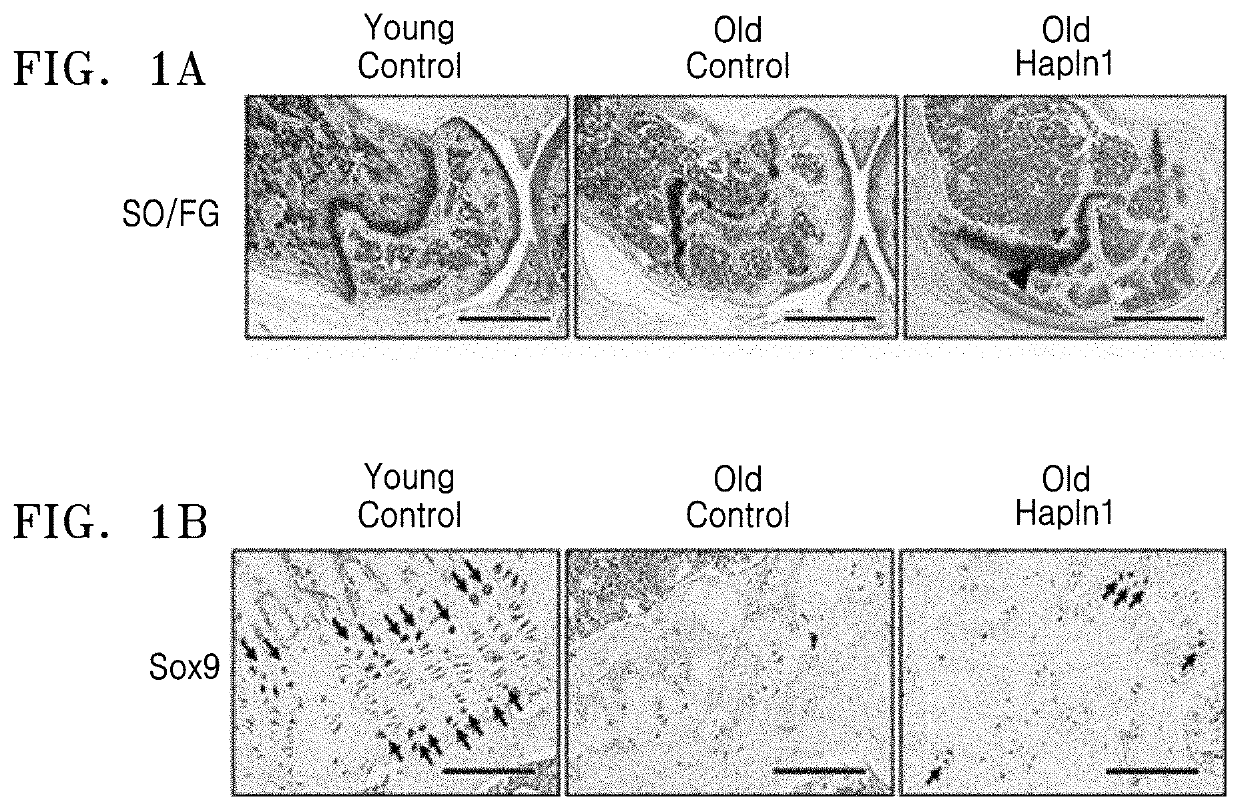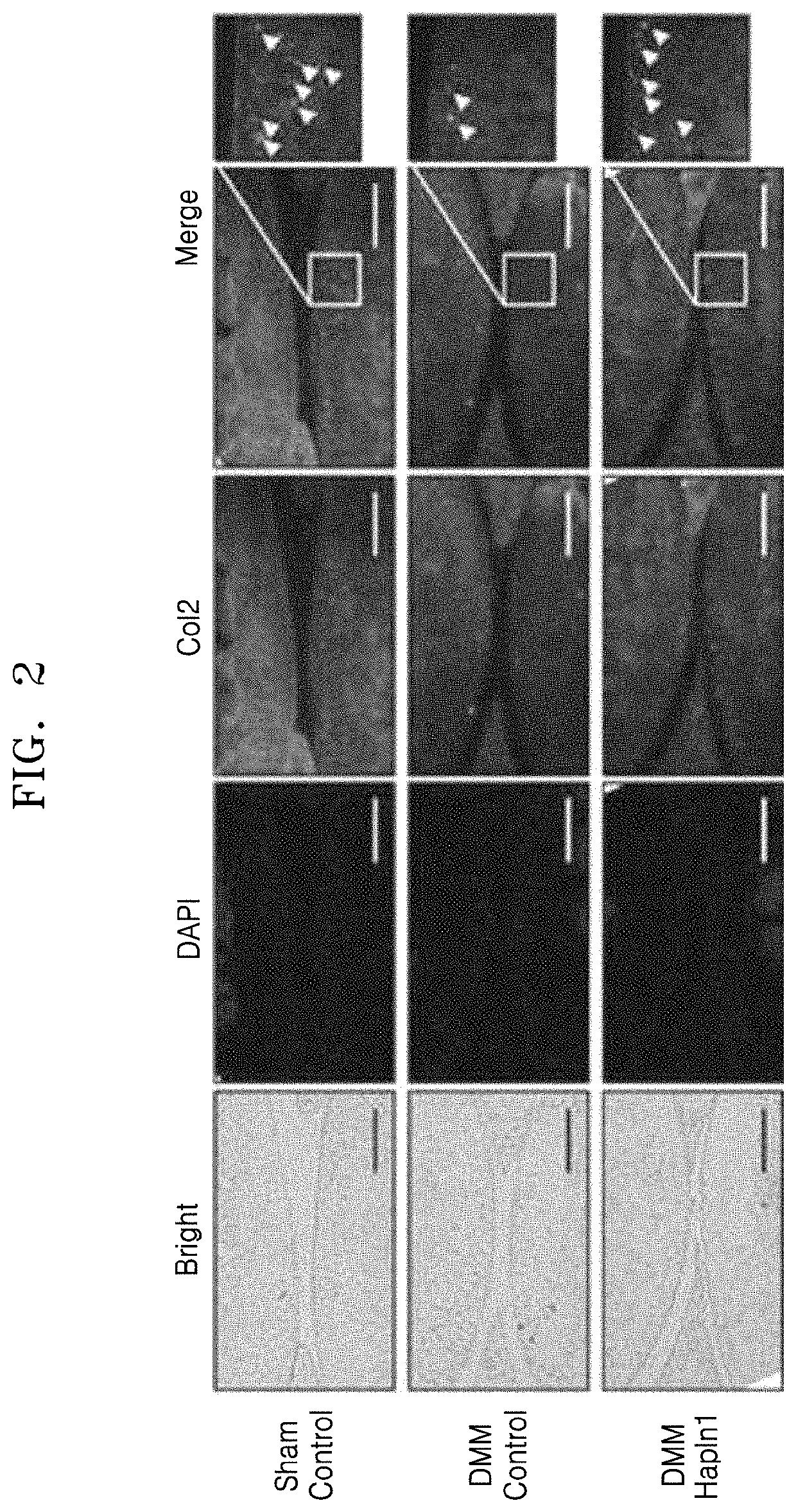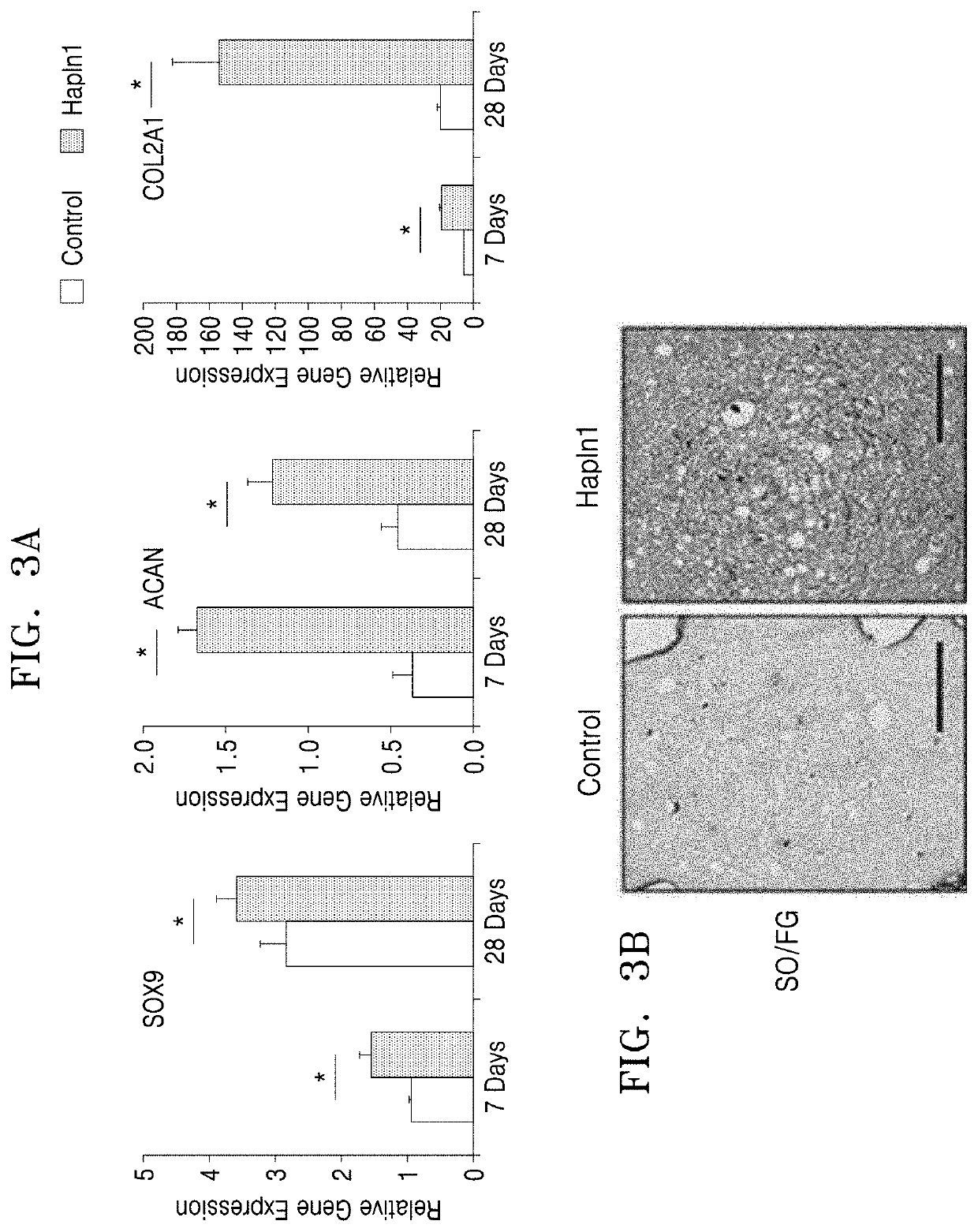Cartilage regeneration composition containing HAPLN1 as active ingredient
a cartilage regeneration and active ingredient technology, applied in the direction of drug compositions, saccharide peptide ingredients, peptide/protein ingredients, etc., can solve the problems of difficult self-regeneration, difficult to maintain biocompatibility, and high pain involved, so as to increase the expression level of tgf- receptor i of chondrocytes, induce cartilage tissue generation, and increase the proportion of cells
- Summary
- Abstract
- Description
- Claims
- Application Information
AI Technical Summary
Benefits of technology
Problems solved by technology
Method used
Image
Examples
example 1
Analysis of Cartilage Regeneration Ability of Hyaluronan and Proteoglycan Link Protein 1 (HAPLN1) Protein In Degenerated Cartilage Tissue In Vivo
1.1 Stimulation of Cartilage Formation In Degenerated Growth Plate By Repeated Intraperitoneal Administration of HAPLN1 Protein
[0036]6-week-old male C57BL / 6 mice were classified as a young group, and 20-month-old C57BL / 6 mice were classified as an old group. The old group was intraperitoneally administered with HAPLN1 protein diluted with phosphate buffered saline (PBS) at a dose of 0.1 mg / kg daily for 2 weeks, whereas the control group was intraperitoneally administered with PBS in an equivalent manner.
[0037]The mouse femur and knee joints of each group were taken and fixed with neutral buffered 10% formalin (NBF) for 48 hours, followed by decalcification with a 10% ethylenediaminetetraacetic acid (EDTA) solution for 7 days. Subsequently, each sample was embedded in paraffin to prepare a paraffin block, and a 5 μm-thick tissue section slid...
example 2
Analysis of Cartilage Regeneration Ability of HAPLN1 Protein In Damaged Cartilage Tissue In Vivo
[0041]7-week-old male C57BL / 6 mice were divided into three groups as follows. A normal control group (sham control group), which is a sham operation group for a destabilization of medial meniscus (DMM) procedure, was bred under the existing conditions for 4 weeks after the procedure. A vehicle treatment group (DMM control group) was bred under the existing conditions for 8 weeks after the DMM procedure, and intraarticularly administered with PBS once a week for the last 4 weeks. A HAPLN1 treatment group (DMM HAPLN1 group) was bred under the existing conditions for 8 weeks after the DMM procedure, and intraarticularly administered with HAPLN1 protein in PBS at a concentration of 1 μg / mL once a week for the last 4 weeks.
[0042]At the end of breeding, each knee tissue to which the procedure and treatment were applied was removed and fixed with NBF for 48 hours, and subsequently decalcified wi...
example 3
Analysis of Cartilage Formation-Stimulating Ability of HAPLN1 Protein In Vitro
3-1. Increase of Cartilage Formation Ability of Human Articular Chondrocytes By HAPLN1 Protein
[0044]Human articular chondrocytes (HACs) were cultured in a 1:1 mixed medium of Dulbecco's modified Eagle medium / F12 (DMEM / F12; Gibco) containing 10% fetal bovine serum (FBS; Gibco), 1% penicillin / streptomycin (Gibco), and 1% non-essential amino acids (NEAA; Gibco) under conditions of 37° C. and 5% CO2.
[0045]As a model for testing the cartilage formation ability of HAC, a three-dimensional culture system in which cells were embedded in alginate beads was used. HAC was uniformly mixed in a 1.25% alginate solution to include 30,000 cells per bead. They were cultured by adding 50 μg / mL of L-ascorbic acid 2-phosphate, 1% insulin-transferrin-selenium (ITS; Gibco), and 10 ng / mL of TGF-β1 to the culture medium. To the HAPLN1 treatment group, 50 ng / mL of HAPLN1 was further added. Culture was continued under conditions of...
PUM
| Property | Measurement | Unit |
|---|---|---|
| area | aaaaa | aaaaa |
| area | aaaaa | aaaaa |
| concentration | aaaaa | aaaaa |
Abstract
Description
Claims
Application Information
 Login to View More
Login to View More - R&D
- Intellectual Property
- Life Sciences
- Materials
- Tech Scout
- Unparalleled Data Quality
- Higher Quality Content
- 60% Fewer Hallucinations
Browse by: Latest US Patents, China's latest patents, Technical Efficacy Thesaurus, Application Domain, Technology Topic, Popular Technical Reports.
© 2025 PatSnap. All rights reserved.Legal|Privacy policy|Modern Slavery Act Transparency Statement|Sitemap|About US| Contact US: help@patsnap.com



